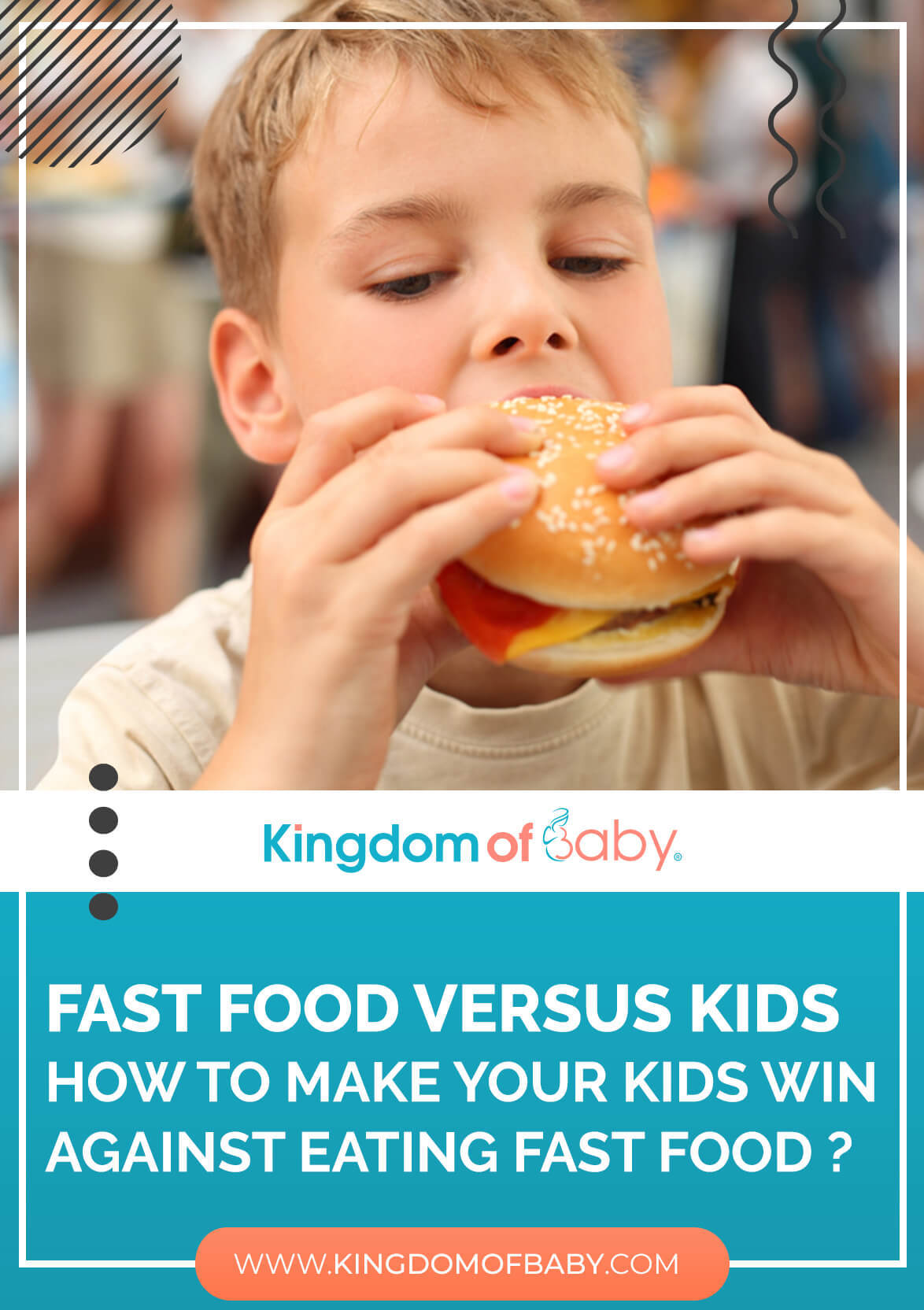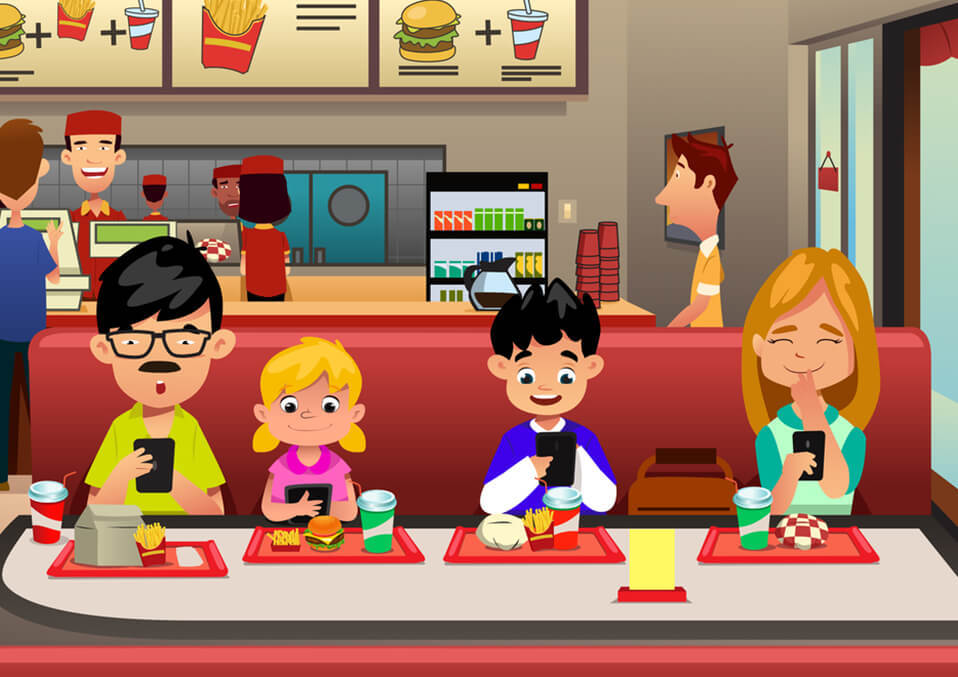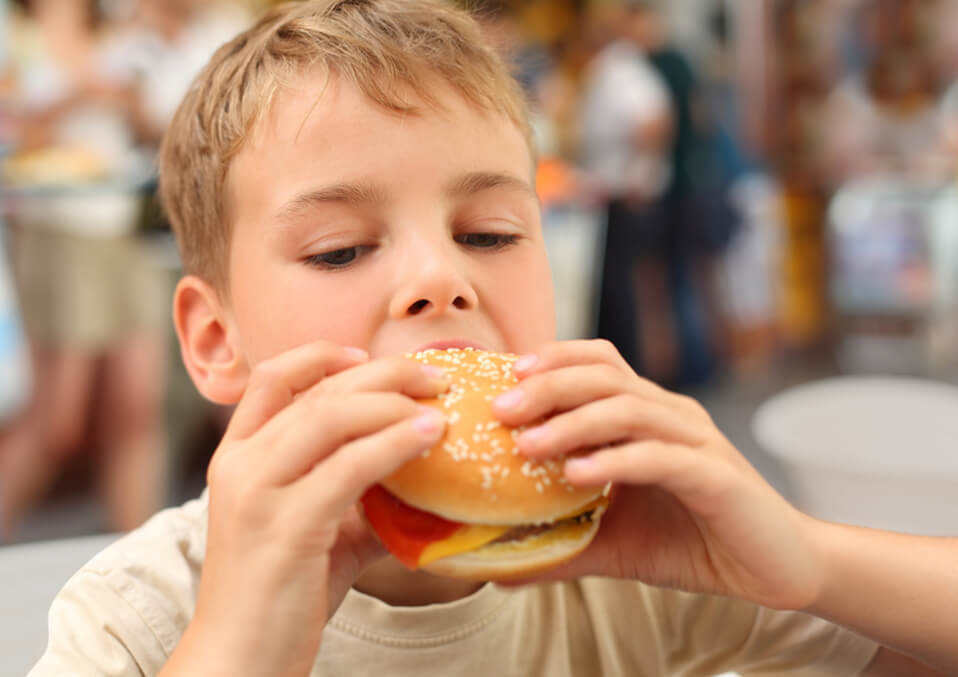 A study in the University of Connecticut revealed that 74 percent of the parents choose to buy drinks and food for their kids in the top and largest fast-food chains in the US—McDonald’s, Burger King, Wendy’s and Subway. Although these restaurants are expressing commitments to offer healthy options in kid’s meals. Today, there is a waging war between fast food versus kids.
A study in the University of Connecticut revealed that 74 percent of the parents choose to buy drinks and food for their kids in the top and largest fast-food chains in the US—McDonald’s, Burger King, Wendy’s and Subway. Although these restaurants are expressing commitments to offer healthy options in kid’s meals. Today, there is a waging war between fast food versus kids.
These large fast-food players automatically serve soda and French fries and other high-bad fat and carbs in their menu. Although most of them are offering kids’ meal side dishes that are healthy, such as fruits, yogurt, fruit juices, low-fat milk, and water. The study also reveals that many parents are little aware of healthier options. Some lack the motivation to choose healthy ones.
Fast food versus kids: how frequent kids eat fast food?
 There is an increase of parents choose to buy fast food for lunch and dinner from 79 percent in 2010, and it went up to 91 percent in 2016. The study reveals that the main driver of the increase in consumption is due to the low cost and increasing value of fast-food meals, convenience, and quick access. Moreover, the growth is associated with the fast-food marketing strategy that targets the palate of the children.
There is an increase of parents choose to buy fast food for lunch and dinner from 79 percent in 2010, and it went up to 91 percent in 2016. The study reveals that the main driver of the increase in consumption is due to the low cost and increasing value of fast-food meals, convenience, and quick access. Moreover, the growth is associated with the fast-food marketing strategy that targets the palate of the children.
Fast Food chain players spent billions of dollars on marketing to popularize and expand fast-food restaurants. The marketing strategy prepares our mindset to visit fast-food restaurants. Fast food becomes the easiest means whether we are on hectic time, traveling or no time to cook for the many mouths to feed. It wants us to settle our stress by eating burgers and fries.
Some notable highlights of UConn study

- All parents respond positively to kids’ meal policies of some restaurants like Subway. They said it gives them at least an option to choose healthy food. Although there are much more options for unhealthy ones
- One-third of the parents bought lunch and dinner in fast –food restaurants are not choosing kid’s meals. They instead buy the regular menu and in adult-sized orders which tends to be less nutritious. Therefore, the kid’s meal option is not a priority of choice
- The study reveals that parents only buy healthier options for children ages 2-5 and older kids (ages 6-11) are no longer eating healthy choices. The research shows 66 percent of the parents likely to receive healthy drink when buying a kid’s meal for young children while 46 percent only of the kids receive healthy beverages
- Restaurants are offering extra fat, sugar, and calories in the form of desserts.
Why is fast food winning against your kids?
 The critical formula if why these fast-food chains are winning the hearts of your kids it’s because they are willing to spend resources to drive the marketing strategies. To win, you need to understand the techniques of how the enemy got the win:
The critical formula if why these fast-food chains are winning the hearts of your kids it’s because they are willing to spend resources to drive the marketing strategies. To win, you need to understand the techniques of how the enemy got the win:
Toys
The topmost powerful marketing tool of a fast-food restaurant. It is used as a promise if you buy a kiddie meal. Children want to eat food because they want to get toys. The problem is not with the toys, but the nutritional value of the food that these children are eating.
Famous characters
Kiddie meal packages come with memorable characters such as Iron Man and Superman. The use of characters is easily recognizable. The study shows the increase in sales every time a fast food restaurant is offering trendy characters.
Promise of fun
Fast food restaurants offer playgrounds that attract children. Some offer fun activities. Sometimes they offer contests like costume contests.
Fast food vs. kids: ways of winning the fight
It is a fact that children love to eat high calories, fried foods, instant food, chocolates, ice cream, pastries, and junk foods. I should say, eating them too much is not a norm.
Here are some ways to help your kids win against fast food:
- Build a habit. While young, whenever you introduce a new food, always explain the benefit they can get out of the food. Give time to tell them the unhealthy foods.
- Positive modeling approach. It is a strategy of influencing psychologically and environmentally. Instead of mocking and telling all the negative sides of junk foods, focus on the benefits of eating healthy foods.
- Be a role model. Kids learn by observation. You need to eat healthy food so they can see and be motivated to do the same.
- Enable a family environment. Make it a tradition that the family prepares for healthy foods. It is best that you involve the kids in the food preparation. Make it fun and memorable and not an obligation or a regular task at home
- Never use junk foods as a bribe or reward. If you use junk food as remuneration or bribe, kids will think and believe that eating them is good and acceptable.
- Make an effort to pack them a healthy lunch. If you encourage your child by giving money and allow him to buy food in the school canteen, more likely he will choose the unhealthy ones. To avoid, pack a healthy, delicious, and nutritious lunchbox
- Involve your child when buying for groceries. When buying food in the supermarket, let your child see that you are choosing to buy healthy ones. You minimize if not avoid buying noodles, chips or popcorn. Be patient, the change is not sudden, and it will come the right time that your child will choose the right food the same as how you buy them in the grocery.
- Encourage to drink more water every day. Water is an essential substance that our body needs. Often when they crave food, it only indicates they are thirsty because 90% of the human body is made of water. Encourage your child to complete the needed number of glasses of water every day.
- Prepare more protein-rich dishes. High protein food will make the child feel fuller. It avoids the child to crave high-calorie junk foods.
- Do not deprive your child, have a “cheat day.” If you are very strict and do not understand the principles of compromising, the child will end up eating and craving more junk foods without your knowledge. Never set an absolute “NO” rule. Set days where you encourage to cheat eating unhealthy food. Set special days to bond with the kids and taste to one of the fast-food restaurants.
Read Also:
- Best Easter Treats For Kids
- Quick And Easy Food Recipes For Kids
- Easy, And Healthy Food Recipes for Kids To Try at Home


